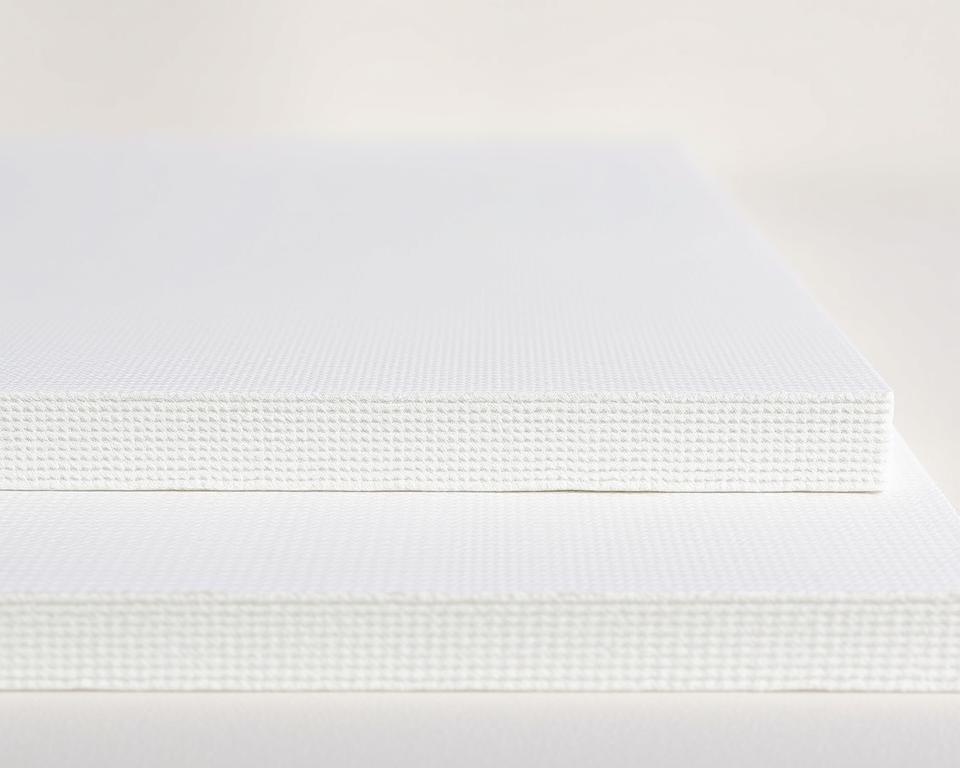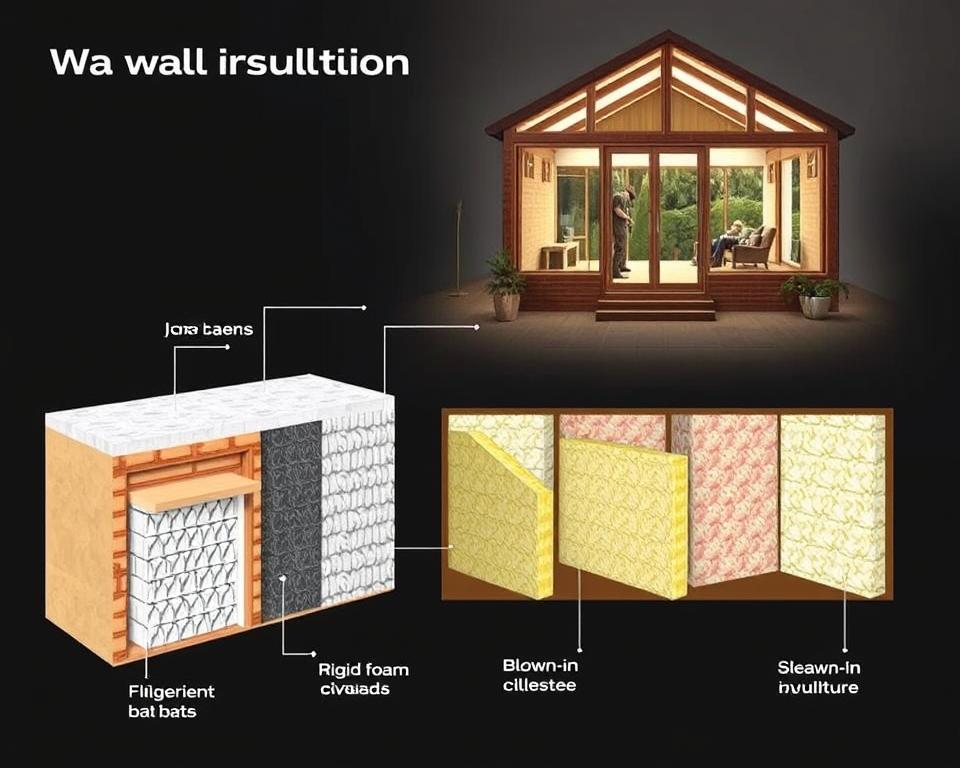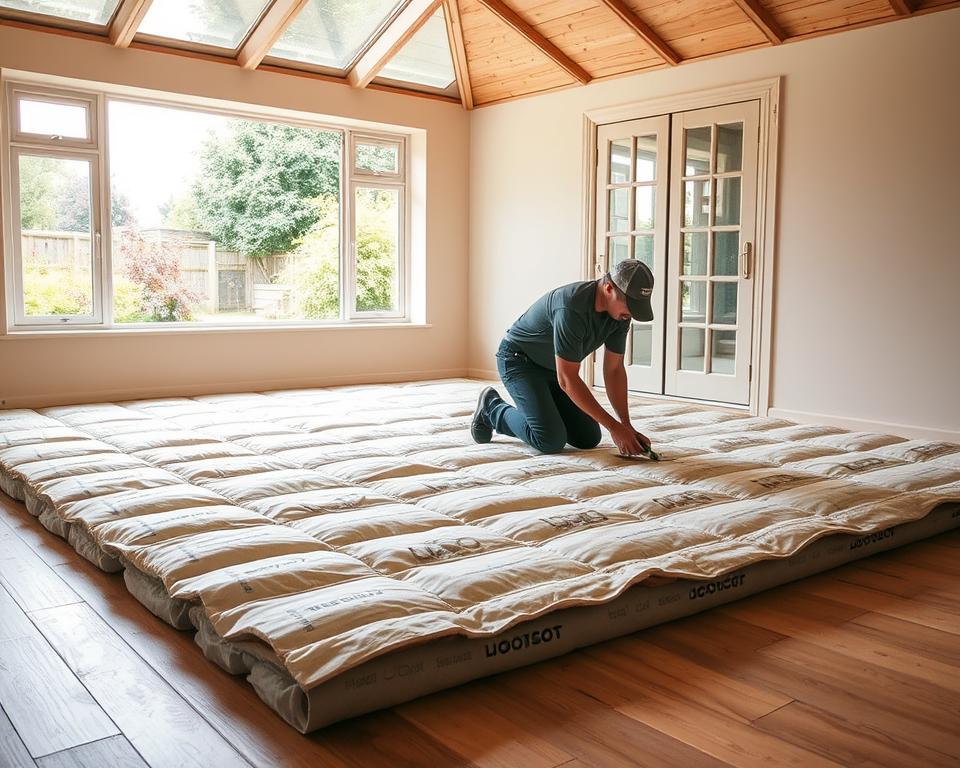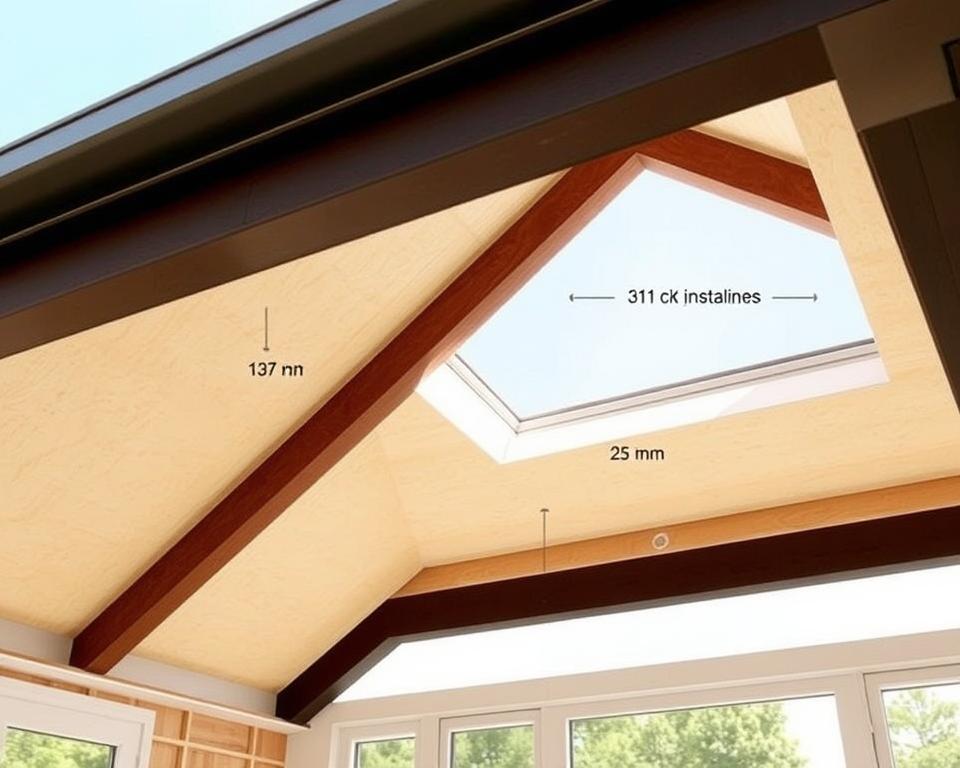what is the best insulation for a garden room?

Creating a comfortable garden room in the UK means getting the insulation right. The unpredictable British weather makes proper garden room insulation UK essential for year-round use. Without quality insulation, your garden space will be freezing in winter and sweltering in summer.
Choosing the best insulation materials depends on several factors. Your budget, the room’s intended use, and local climate all play important roles. Garden office insulation needs differ from a casual hobby space. Working from home requires consistent temperatures and thermal efficiency throughout the day.
Building Regulations Part L sets specific standards for energy-efficient garden rooms. These rules ensure your structure meets minimum thermal performance requirements. The right insulation helps you comply with regulations while keeping energy bills low.
Installation methods vary between different insulation types. Some materials suit DIY projects, while others need professional fitting. Understanding these differences helps you make informed decisions about your garden room project.
Inhaltsverzeichnis
Key Takeaways
- Proper insulation is crucial for year-round comfort in British garden rooms
- Building Regulations Part L sets thermal efficiency standards for outbuildings
- Different insulation materials offer varying levels of performance and cost
- Climate conditions in the UK require robust insulation solutions
- Professional installation may be necessary for certain insulation types
- Energy-efficient garden rooms can significantly reduce heating and cooling costs
Understanding Garden Room Insulation Requirements
Creating a comfortable garden room in Britain requires careful consideration of insulation. The right UK climate insulation transforms your space into a year-round retreat. Meeting garden room building regulations whilst achieving optimal thermal comfort involves understanding specific requirements and standards.
Climate Considerations in the UK
Britain’s unpredictable weather poses unique challenges for garden room insulation. Cold, damp winters demand robust moisture control systems. Warm summers require insulation that prevents overheating. The varying temperatures throughout the year mean your insulation must perform in all conditions.
Coastal areas face additional salt air exposure. Northern regions experience harsher winters than southern counties. These regional differences influence insulation choices and thickness requirements.
Building Regulations and U-Values
Garden room building regulations specify minimum thermal performance standards. U-value requirements determine how much heat passes through building elements. Lower values indicate better insulation performance.
| Building Element | Required U-Value (W/m²K) | Typical Insulation Thickness |
|---|---|---|
| External Walls | 0.28 | 100-150mm |
| Roof | 0.18 | 150-200mm |
| Floor | 0.22 | 100-150mm |
These standards ensure energy efficiency and comfort. Local authorities may request calculations proving compliance before approving your project.
Year-Round Comfort Goals
Achieving thermal comfort means maintaining pleasant temperatures without excessive heating or cooling costs. Proper insulation reduces energy consumption by up to 75% compared to uninsulated structures. Effective moisture control prevents condensation problems that damage building materials and create unhealthy environments.
Types of Insulation Materials for Garden Rooms
Selecting the right insulation material can make all the difference in creating a comfortable garden room. Each type offers unique benefits, from thermal efficiency to sound dampening. Let’s explore the most popular options available in the UK market.
Mineral Wool and Rock Wool
Rockwool stands out as a versatile choice for garden rooms. This mineral-based insulation provides excellent fire resistance alongside impressive acoustic properties. The material’s fibrous structure traps air pockets, creating an effective thermal barrier. Its ability to reduce noise makes it ideal for music studios or home offices in the garden.
PIR Foam Boards
PIR insulation boards deliver exceptional thermal performance in slim profiles. Leading brands like Kingspan and Celotex offer products specifically designed for garden buildings. These rigid boards are lightweight yet incredibly efficient, making them perfect when space is limited. Their foil facing acts as a vapour barrier, protecting against moisture damage.

Natural and Eco-Friendly Options
Sheep’s wool insulation represents a sustainable alternative to synthetic materials. This eco-friendly insulation naturally regulates moisture whilst maintaining its thermal properties. Wood fibre boards offer another green solution, providing breathability and temperature regulation throughout the seasons.
Spray Foam Insulation
Spray foam creates an airtight seal that eliminates draughts completely. Professional installation is essential for this material, as it expands to fill every gap and crevice. Closed-cell spray foam provides the highest R-value per inch, making it extremely efficient for roof applications.
What Is the Best Insulation for a Garden Room?
Choosing the optimal insulation choice for your garden room can make the difference between a comfortable year-round space and one that’s too hot in summer or freezing in winter. After careful insulation comparison, PIR foam boards stand out as the best garden room insulation UK homeowners can invest in.
PIR (polyisocyanurate) boards offer exceptional thermal performance ratings of 0.022 W/mK, meaning they provide brilliant insulation whilst taking up minimal space. Their slim profile makes them perfect for garden rooms where every centimetre counts. You’ll typically need just 100mm of PIR to achieve the same insulation as 170mm of mineral wool.
For those watching their budget, mineral wool presents a solid alternative. While it requires more thickness to match PIR’s performance, it costs significantly less and still delivers reliable results. Natural materials like sheep’s wool or wood fibre appeal to eco-conscious builders, though they come with higher price tags.
The table below shows how different materials stack up:
| Insulation Type | Thermal Conductivity (W/mK) | Thickness for U-value 0.18 | Relative Cost |
|---|---|---|---|
| PIR Foam Board | 0.022 | 100mm | £££ |
| Mineral Wool | 0.035 | 170mm | ££ |
| Sheep’s Wool | 0.038 | 185mm | ££££ |
Remember, the best insulation balances performance, cost, and your specific needs. PIR boards win for most projects, but your perfect choice depends on your budget and environmental priorities.
Wall Insulation Options and Techniques
Selecting the right wall insulation methods for your garden room makes a significant difference to comfort and energy efficiency. Understanding different approaches helps you choose between cavity wall insulation, internal boarding, or external cladding systems. Each method offers unique benefits for managing heat loss and moisture control.
Cavity Wall Insulation Methods
Standard timber frame construction creates cavities between 100mm and 150mm wide, perfect for cavity wall insulation. Popular materials include mineral wool batts, PIR boards, and blown-in cellulose. These fit snugly between studs to prevent thermal bridging through the frame.
Installation requires careful attention to gaps and compression. Cut insulation slightly oversized to ensure a tight fit without squashing the material, which reduces its effectiveness.
Internal vs External Wall Insulation
Internal insulation preserves your garden room’s external appearance whilst improving thermal performance. This approach involves fixing insulation boards to interior walls before plasterboarding. External insulation eliminates thermal bridging completely by wrapping the entire structure in a continuous layer.

| Insulation Type | Advantages | Thickness Required | Cost per m² |
|---|---|---|---|
| Internal Boarding | Preserves exterior look | 50-100mm | £25-40 |
| External Cladding | No thermal bridges | 80-120mm | £50-80 |
Vapour Barriers and Breathability
A vapour control layer prevents warm, moist air from penetrating walls where it could condense. Products like Tyvek Housewrap go on the warm side of insulation. Breathable membranes on the cold side allow trapped moisture to escape outwards, preventing damp problems whilst maintaining insulation performance.
Floor Insulation for Garden Rooms
Proper floor insulation forms the foundation of a comfortable garden room, protecting against heat loss and moisture problems. The right approach depends on your floor construction type and local ground conditions. Getting this crucial layer right ensures your garden space stays warm, dry, and energy-efficient throughout the year.
Suspended Floor Systems
A suspended timber floor offers excellent protection against ground moisture whilst providing space for substantial insulation. This construction method raises the floor structure above ground level, creating a ventilated void beneath.
For optimal thermal performance, install 150mm PIR insulation boards between floor joists. Leave a small air gap above the insulation to maintain ventilation. This prevents moisture build-up that could damage timber components. Many installers use galvanised steel clips or netting to support the insulation boards securely between joists.

Solid Floor Insulation Solutions
Concrete base insulation requires a different approach. Start with a properly installed damp proof membrane directly on the prepared ground. Place 100mm PIR insulation boards above this membrane, ensuring all joints are tightly fitted and sealed with foil tape.
The insulation sits beneath the concrete slab, creating an effective thermal barrier. This method works particularly well in areas with high water tables or clay soils prone to movement. A polythene sheet above the insulation provides additional protection during concrete pouring.
Damp-Proofing Considerations
Ground moisture protection remains essential regardless of floor type. Install the damp proof membrane with at least 150mm overlaps at joints, sealed with appropriate tape. Turn the membrane up at edges to connect with wall damp-proofing.
Adequate ventilation prevents condensation problems. For suspended floors, maintain clear air bricks and avoid blocking ventilation paths. With solid floors, ensure perimeter drainage keeps water away from the structure. Regular inspection of these elements maintains long-term performance.
Roof and Ceiling Insulation Strategies
Selecting the right roof insulation thickness plays a crucial role in creating an energy-efficient garden room. Most modern designs use between 120mm and 150mm of PIR insulation boards to achieve the required U-value of 0.18 W/m²K. This specification ensures your garden room stays comfortable throughout the British seasons whilst keeping energy costs low.
Two main approaches dominate garden room roofing: warm roof construction and cold roof systems. Each method offers distinct advantages for different situations.

Warm roof construction places insulation above the roof deck, creating a continuous thermal barrier. This method eliminates thermal bridging and reduces condensation risks. Cold roof systems position insulation between ceiling joists, requiring proper cold roof ventilation to prevent moisture build-up. A 50mm ventilation gap above the insulation allows air circulation to keep the roof space dry.
| Roof Type | Insulation Position | Ventilation Needs | Thermal Efficiency |
|---|---|---|---|
| Warm Roof | Above deck | Minimal | Excellent |
| Cold Roof | Between joists | Essential (50mm gap) | Good |
Green roof systems add extra benefits to ceiling insulation by providing additional thermal mass. Sedum or wildflower coverings help regulate internal temperatures naturally whilst supporting local biodiversity. The extra weight requires structural calculations but delivers superior thermal efficiency year-round.
Windows and Doors: Thermal Performance
Windows and doors represent critical points for heat loss in any garden room. Selecting the right glazing and ensuring proper installation can dramatically improve your space’s thermal efficiency. Understanding the performance differences between various options helps you make informed decisions that balance comfort with cost.
Double vs Triple Glazing
The choice between double and triple glazing depends on your specific needs and budget. Standard double glazing U-values typically measure around 1.2 W/m²K, providing excellent insulation for most UK garden rooms. These units feature two glass panes separated by an argon-filled cavity, reducing heat transfer effectively.
Triple glazed windows offer enhanced performance with U-values as low as 0.8 W/m²K. The additional glass pane and extra gas-filled cavity create superior insulation, making them ideal for premium builds or particularly exposed locations. The improved thermal performance comes at a higher initial cost, but the long-term energy savings often justify the investment.

Thermal Breaks and Frame Materials
Frame selection plays a vital role in overall window performance. Aluminium frames incorporating thermal break technology prevent cold bridging by separating internal and external frame sections with insulating material. This design maintains the strength of aluminium whilst significantly improving thermal efficiency.
uPVC frames naturally provide good insulation without requiring additional thermal breaks. Composite frames combine materials to optimise both strength and insulation properties. When selecting energy-efficient doors, consider frames with multi-chamber designs that trap air for enhanced insulation.
Draught-Proofing Techniques
Even the best windows and doors need proper sealing to prevent air leakage. Quality draught excluders around frames eliminate gaps that compromise thermal performance. Compression seals provide excellent long-term protection when properly installed and maintained.
- Install brush strips at the bottom of doors
- Apply foam tape to window frames
- Use silicone sealant for permanent gaps
- Check and replace worn weatherstripping annually
Regular maintenance of seals and draught excluders ensures consistent performance throughout your garden room’s lifetime. Small gaps around openings can significantly impact comfort and heating costs if left unaddressed.
Cost Comparison of Garden Room Insulation
Choosing the right insulation for your garden room involves balancing performance with insulation costs UK homeowners face. Understanding price variations helps you make informed decisions that fit your budget whilst achieving excellent thermal efficiency.
Current PIR board prices reflect their superior performance. These rigid foam boards typically cost between £30 and £50 per square metre for 100mm thickness. Their excellent thermal properties justify the investment for many garden room projects across the UK.
For those seeking budget garden room insulation, mineral wool presents an attractive option at £15 to £25 per square metre. This material delivers reliable performance without breaking the bank. Natural insulation materials like sheep’s wool or wood fibre sit in the middle range, costing £25 to £60 per square metre.
| Insulation Type | Material Cost per m² | Installation Costs per m² | Total Cost per m² |
|---|---|---|---|
| PIR Boards (100mm) | £30-£50 | £20-£40 | £50-£90 |
| Mineral Wool | £15-£25 | £20-£40 | £35-£65 |
| Natural Insulation | £25-£60 | £20-£40 | £45-£100 |
| Spray Foam | £20-£30 | £35-£50 | £55-£80 |
Professional installation costs add £20 to £40 per square metre across most insulation types. Spray foam requires specialist equipment, pushing installation prices higher. This insulation value comparison reveals that whilst premium materials cost more initially, their superior performance often delivers better long-term value through reduced heating bills.
Installation Tips and Professional Considerations
Installing garden room insulation requires careful planning and attention to detail. Choosing between DIY insulation installation and hiring professional insulation installers depends on the materials you’re using and your experience level. Following installation best practices ensures your garden room stays comfortable throughout the year whilst avoiding costly repairs later.
DIY Installation Guidelines
DIY insulation installation works well for PIR boards and mineral wool. Start by measuring each cavity precisely before cutting materials. PIR boards need straight, clean cuts using a fine-toothed saw. For mineral wool, use a sharp knife and avoid compressing the material.
Essential proper fitting techniques include:
- Leaving no gaps between insulation boards
- Sealing all joints with aluminium tape
- Installing vapour barriers on the warm side
- Wearing protective equipment when handling materials
When to Hire a Professional
Professional insulation installers become essential for spray foam and blown insulation projects. These materials require specialist equipment and certification. Professionals understand building regulations and ensure compliance with current U-value requirements.
Consider hiring experts when dealing with complex roof structures or retrofitting existing garden rooms. Their experience prevents thermal bridging and ensures proper ventilation throughout the structure.
Common Installation Mistakes to Avoid
Understanding typical insulation mistakes helps achieve better results. Compressing mineral wool reduces its effectiveness by up to 50%. Gaps between boards create thermal bridges that waste energy and cause cold spots.
| Common Mistake | Impact | Prevention |
|---|---|---|
| Compressed mineral wool | Reduced R-value by 50% | Cut to exact size |
| Gaps between boards | 15% heat loss increase | Use expanding foam |
| Wrong vapour barrier position | Condensation damage | Install on warm side |
| Missing edge sealing | Air leakage | Seal all perimeters |
Incorrect vapour barrier positioning causes condensation between walls, leading to mould growth and structural damage. Always position barriers on the warm side of insulation, typically facing the interior space.
Conclusion
Choosing the right insulation makes all the difference for energy-efficient garden buildings in the UK. PIR foam boards stand out as the best garden room insulation summary for most homeowners. These boards offer excellent thermal performance whilst taking up minimal space. They strike the perfect balance between cost and effectiveness for our British climate.
Creating year-round comfort requires more than just picking one material. You need to think about the entire building envelope. This includes insulating your walls, floor, and roof properly. Quality windows and doors play a vital role too. Double or triple glazing paired with proper draught-proofing keeps the warmth in during winter and the heat out in summer.
Building Regulations set the minimum standards for insulation recommendations UK properties must meet. Going beyond these requirements pays off in lower energy bills and better comfort. Whether you choose PIR boards, mineral wool, or natural materials, proper installation matters just as much as the product itself. A well-insulated garden room becomes a truly usable space throughout the year, adding real value to your home.
FAQ
What thickness of insulation do I need for my garden room walls?
For garden room walls, you’ll typically need 100-150mm of insulation to meet Building Regulations Part L requirements. PIR foam boards like Kingspan or Celotex can achieve the required 0.28 W/m²K U-value with just 100mm thickness, whilst mineral wool may require 140-150mm to achieve the same performance.
Is it worth investing in triple glazing for a garden room?
Double glazing with a U-value of 1.2 W/m²K is usually sufficient for most UK garden rooms and offers better value for money. Triple glazing, whilst providing superior thermal performance at 0.8 W/m²K, is typically only worthwhile for premium builds or if you’re planning to use your garden room as a year-round workspace in particularly cold locations.
Can I install garden room insulation myself?
Yes, DIY installation is feasible for PIR boards and mineral wool if you’re comfortable with measuring, cutting, and fitting materials carefully. However, spray foam insulation and blown-in insulation require certified professionals. The key is avoiding gaps that cause thermal bridging and ensuring proper vapour barrier installation to prevent condensation issues.
What’s the best eco-friendly insulation for garden rooms?
Sheep’s wool and wood fibre boards are excellent natural insulation options for eco-conscious builders. Whilst they cost £25-60 per m² compared to £15-25 for mineral wool, they offer good thermal performance, natural breathability, and are completely sustainable. They’re particularly suitable if you’re prioritising environmental impact over initial cost.
How much does professional insulation installation cost?
Professional installation typically adds £20-40 per m² to your material costs. For a standard 20m² garden room, expect to pay £400-800 for labour alone. However, professional installation ensures proper fitting, reduces thermal bridging, and often comes with guarantees that can offset the additional expense through improved performance.
Do I need a vapour barrier in my garden room?
Yes, a vapour barrier is essential to prevent interstitial condensation within your garden room walls. Products like Tyvek Housewrap should be installed on the warm side of the insulation (typically the internal face) to stop moisture from entering the wall cavity whilst allowing any trapped moisture to escape outwards through breathable membranes.
What’s the minimum floor insulation needed for a garden room?
For suspended timber floors, you’ll need at least 150mm of PIR board insulation between joists. For solid concrete bases, 100mm of PIR boards above the damp-proof membrane is standard. Always ensure proper damp-proofing to prevent ground moisture compromising your insulation’s effectiveness.
How long will it take for premium insulation to pay for itself?
Premium PIR insulation costing £30-50 per m² typically pays for itself through energy savings within 5-7 years, depending on your garden room usage. If you’re using it as a daily home office with heating requirements, the payback period can be as short as 3-4 years compared to basic mineral wool insulation.

